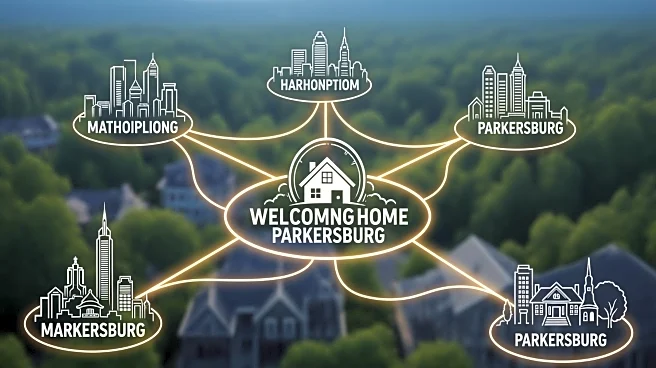What's Happening?
The U.S. housing market is experiencing a significant shift as homebuyers from various metropolitan areas are increasingly looking to purchase homes in Cleveland, Ohio. This trend is driven by the scarcity
of homes on the market nationwide, which remains below pre-pandemic levels. Despite a slowdown in sales over the past year, home prices continue to be elevated due to limited availability. According to data compiled by Stacker using cross-market demand statistics from Realtor.com, Cleveland has become a focal point for potential buyers from cities such as Washington, DC, New York, NY, and Indianapolis, IN. The view share, which represents the percentage of online views to Cleveland from each metro, highlights the interest from these areas, with Washington, DC leading at 17.9%, followed by New York at 14.5%.
Why It's Important?
The increased interest in Cleveland from major U.S. metros underscores the ongoing challenges in the national housing market, where high prices and limited inventory are pushing buyers to explore new locations. This trend could have significant implications for Cleveland's local economy, potentially driving up property values and increasing demand for housing-related services. As more buyers from high-cost areas consider relocating to Cleveland, the city may experience demographic shifts and increased economic activity. This could benefit local businesses and the real estate sector, while also posing challenges related to infrastructure and community planning.
What's Next?
As the trend of cross-market home buying continues, Cleveland may need to address potential impacts on its housing market and infrastructure. Local policymakers and real estate developers might consider strategies to accommodate the influx of new residents, such as expanding housing inventory and improving urban amenities. Additionally, the city could see increased investment in residential and commercial real estate, prompting further economic growth. Stakeholders, including local government and community organizations, may need to collaborate to ensure sustainable development and maintain the city's appeal to new residents.
Beyond the Headlines
The movement of homebuyers from high-cost metros to Cleveland reflects broader shifts in the U.S. housing market, where affordability and availability are key concerns. This trend may also highlight cultural and lifestyle changes, as individuals seek more spacious and affordable living conditions. The potential influx of diverse populations could enrich Cleveland's cultural landscape, fostering new community dynamics and opportunities for social integration.











